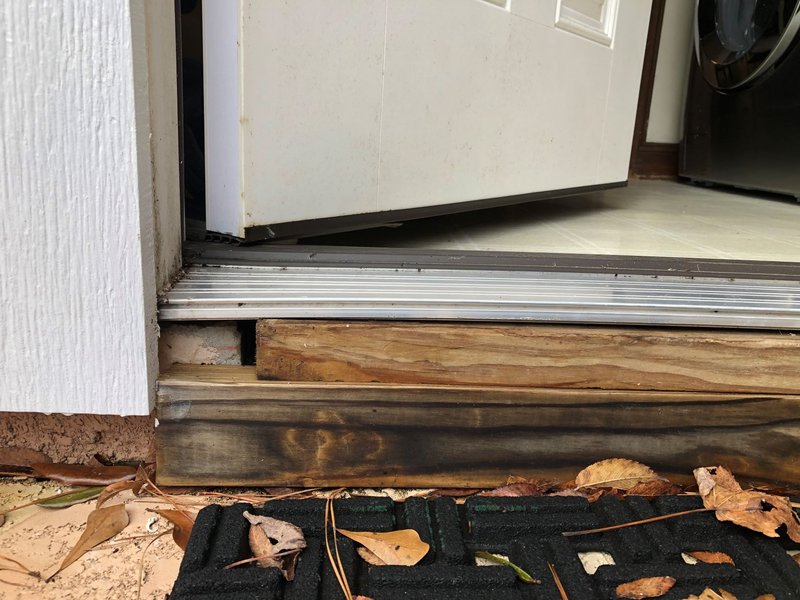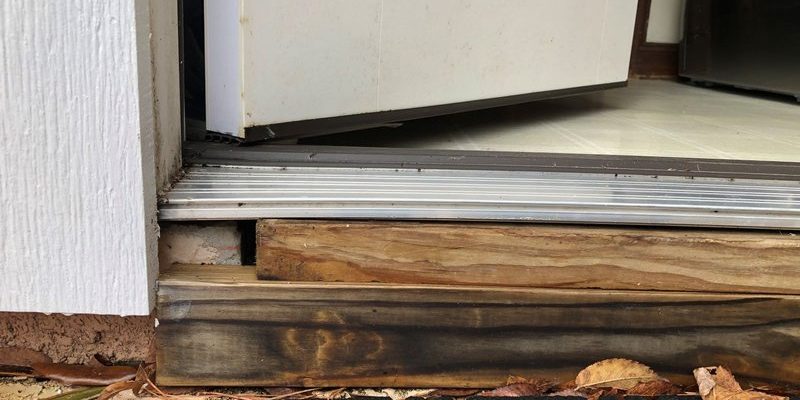
Let me explain: an exterior door threshold isn’t just a strip of metal or wood you walk across. It’s a hidden workhorse that keeps out drafts, rain, and bugs—while standing up to daily traffic, weather, and the constant cycle of temperature changes. When your threshold starts squeaking, it’s usually begging for a little attention. The good news? Most causes of a squeaky threshold are simple, and you don’t need to be a pro or own a Stanley or Schlage branded door to figure it out.
What Actually Makes an Exterior Door Threshold Squeak?
You might be wondering what’s even making that noise in the first place. There’s no motor under your feet, no fancy gadget—just old-fashioned friction. When two surfaces rub together and there isn’t enough lubrication, you’ll often hear a squeak. With an exterior door threshold, that usually means parts like the metal cap, wooden sill, or even a rubber weatherstrip are rubbing or flexing against each other when you step on them.
Sometimes, the screws holding the threshold in place have loosened up over time. So each time you step, the threshold wiggles just enough to make a racket. Other times, seasonal changes cause the wood or metal to swell, shrink, or warp—putting pressure on the parts and making them squeak against each other. Even dirt or grit that’s worked its way into the crevices can contribute to that annoying sound.
Honestly, a squeaky threshold is usually just a symptom—like a cough. It’s your door’s way of saying: something’s rubbing the wrong way, and I need a little TLC.
Common Causes of Squeaking Exterior Door Thresholds
Let’s break down the main troublemakers:
- Loose Screws: Over time, the screws underneath your threshold may loosen, especially if folks are stomping in and out or if the threshold is bearing a lot of weight. When the screws aren’t tight, the threshold will shift each time it’s stepped on, causing that telltale squeak.
- Warped Materials: Wood and even some metals expand and contract with changes in temperature and humidity. If your threshold or the door frame warps even slightly, it can press the pieces together so they rub and squeak with each step.
- Lack of Lubrication: Sometimes, the solution is as simple as a little lubricant. Unprotected wood can become “grabby,” and metal can dry out or corrode, especially if the threshold is exposed to the elements. That dry contact equals noisy friction.
- Dirt and Debris: All sorts of grit can work its way under your threshold—think sand, leaves, or fine gravel. When you step, this grit grinds between the frame and threshold, making a squealing or grinding sound.
Here’s the thing: most exterior thresholds aren’t high-tech, but they do need a bit of upkeep. That squeak isn’t a code to crack—it’s just a nudge to check things out.
How to Troubleshoot a Squeaky Threshold
If you’re up for a little DIY troubleshooting, here’s how to track down the noise:
- Step 1: Listen Closely. Walk slowly across the threshold, putting weight at different spots. Is the noise in one corner, right in the middle, or along one edge? Pinpointing the spot makes everything easier.
- Step 2: Check for Movement. Place your hand on the threshold as you step down. Feel for any shifting, flexing, or “give”—that’s often a clue that something underneath is loose or warped.
- Step 3: Inspect the Screws. Look for visible screws along the threshold. Grab a screwdriver (usually a Phillips), and give each screw a gentle twist. If they turn freely, they’re too loose.
- Step 4: Look for Dirt or Damage. Sweep away any dirt, then check for visible gaps, cracks, or spots where wood or metal looks out of place.
Don’t rush—sometimes, just slowing down and feeling around is the best troubleshooting “code” you’ll ever need!
Simple Fixes for a Squeaking Threshold
Once you know what’s causing the squeak, fixing it usually takes a few minutes:
- Tighten Loose Screws: If the screws were loose, tighten them until they’re snug—but don’t overdo it. Overtightening can strip wood or crack plastic.
- Add Lubrication: A silicone spray or a dry lubricant (like the kind you’d use on a door hinge) works wonders. Lift any rubber weatherstripping gently and spray (or rub) where the surfaces meet. Avoid thick greases since they attract dirt.
- Clean Out Debris: Use a vacuum or brush to remove dirt, leaves, and small stones. It’s surprising how much crunchy stuff can work its way into the threshold’s tiny cracks.
- Check for Warping: If the threshold is visibly bent or the wood has swollen, you may need to sand it lightly or adjust any adjustable screws under the cap. If it’s badly warped, replacement is the best fix.
Honestly, most people find that just tightening screws and adding a little lube makes the noise vanish. But if your threshold is really warped or cracked, you might be in the market for a new one. Don’t worry—universal replacements fit most door brands, from Stanley to Schlage.
What If the Squeak Won’t Go Away?
Sometimes, no matter how many times you tighten, spray, or clean, the squeak still shows up. That can be frustrating, especially if you’ve checked the usual suspects. When this happens, it might mean:
- The subfloor beneath the threshold is loose or damaged. This is more common in older homes, where the wood frame underneath the threshold has started to flex or rot.
- The threshold itself isn’t installed properly. If it’s not sitting flat or isn’t supported at every spot, it’ll flex every time you walk over it—making noise every single time.
- Your weatherstripping is to blame. Some thresholds have adjustable weatherstripping that can dry out or shift. If this piece is squeaking, you might need to replace it or lube it up.
If the noise is driving you wild and you can’t find the source, it might be time to call a pro. Door and frame specialists can reset or replace the threshold—sometimes with sturdier, better-insulated options that make life quieter and your home more energy efficient.
When Should You Replace Your Door Threshold?
So when does a squeak mean it’s time to call it quits and get a new threshold? If you spot any of the following, replacement is usually the best move:
- Visible cracking or splitting. Once the material itself is damaged, no amount of tightening or lubing will help.
- Significant warping or water damage. If the threshold feels spongy, looks swollen, or has started to rot, it’s time for a swap.
- Separation from the floor or frame. If you see gaps between the threshold and the floor (or your threshold wiggles a lot), it probably can’t do its main job—keeping the elements out.
Choosing a replacement isn’t complicated. Universal thresholds are easy to find at hardware stores and fit most exterior doors, regardless of the brand. There are even adjustable versions if your door frame isn’t perfectly level. Some people worry about matching the finish or code compliance—just bring a photo or the old threshold to the store, and you’ll get what you need.
Keeping Your Exterior Door Threshold Squeak-Free Year-Round
A little maintenance goes a long way in keeping your threshold—and the rest of your door—quiet and sturdy. Here’s what works best:
- Check screws every few months. Just give them a quick twist when you’re sweeping or wiping down your entryway.
- Keep things clean. Sweep away sand, leaves, and dirt regularly. They’re not just unsightly—they’re “squeak fuel.”
- Use a dry lubricant twice a year. It only takes a few seconds, and it keeps moving parts from grinding against each other.
- Watch for signs of water damage. If your exterior door is exposed to a lot of rain, check for soft spots or staining near the threshold. Early action saves you from bigger repairs later.
Let’s be honest: exterior door thresholds are like the unsung heroes of the hardware world. A little attention and they’ll stay silent, strong, and reliable for years.
Final Thoughts: Peace and Quiet at Your Front Door
A squeaky threshold can be a small thing, but it’s amazing how much it can get under your skin—especially when you hear it at all hours. The good news is, most of the time, it’s not a big deal. With a screwdriver, a can of lubricant, and a little patience, you can fix the problem and make your entryway silent again. If it turns out you need a new part, replacements are straightforward and don’t require brand loyalty or professional installer skills.
Whether your door has a universal or branded threshold, staying ahead of squeaks is mostly about paying attention and not waiting until a minor annoyance turns into a bigger repair job. Next time you hear that telltale squeak, you’ll know exactly what to do—and you might even enjoy the process a little.
